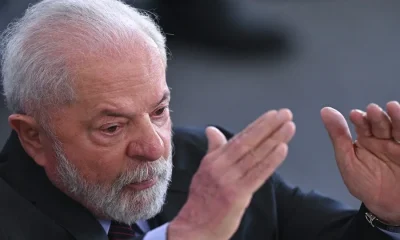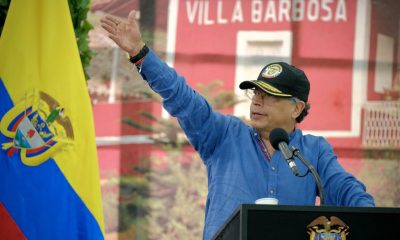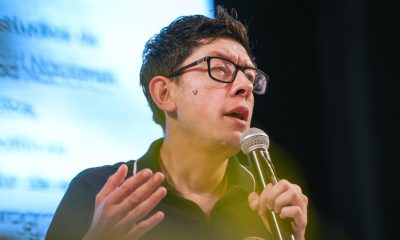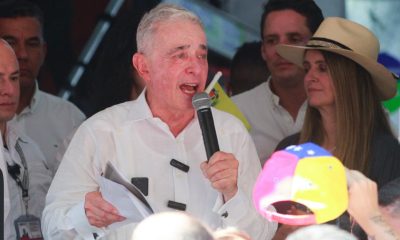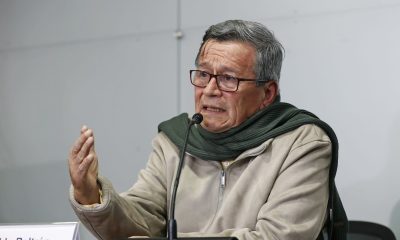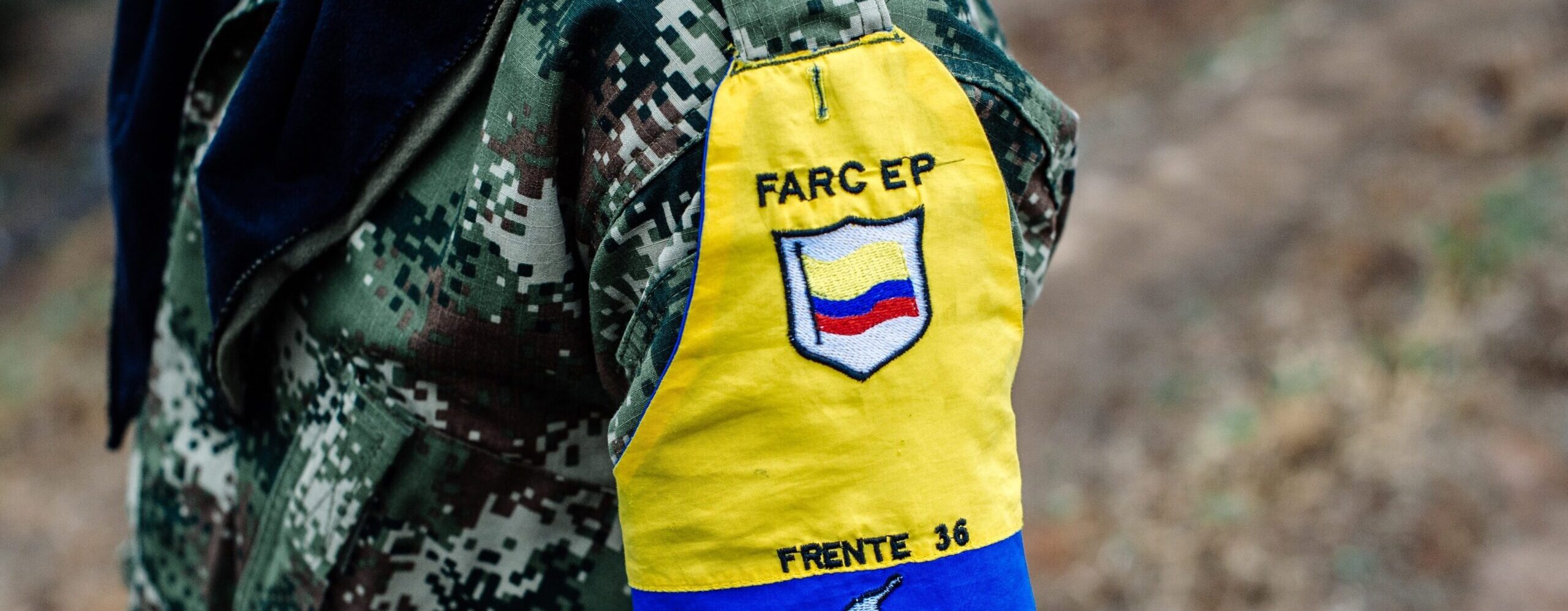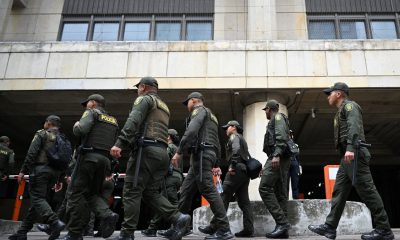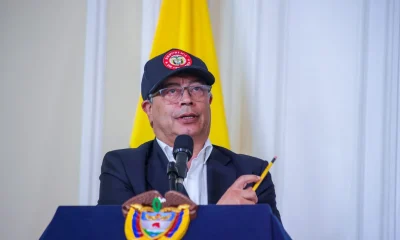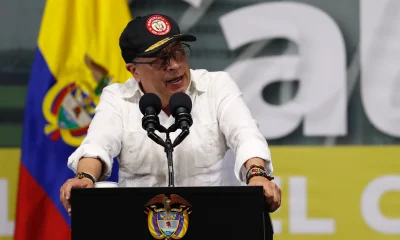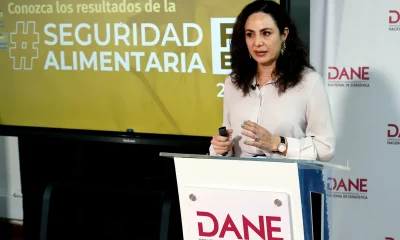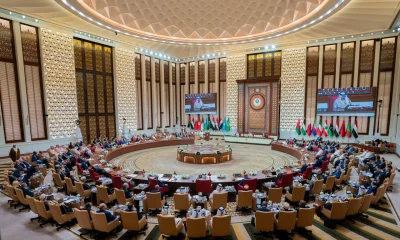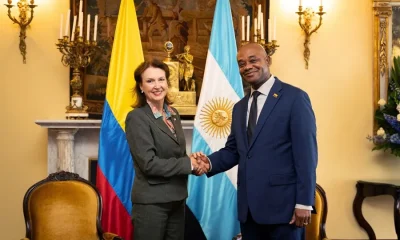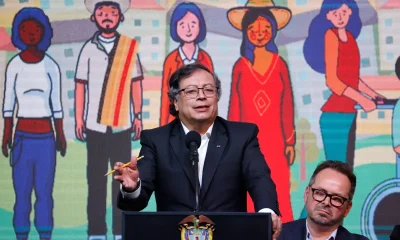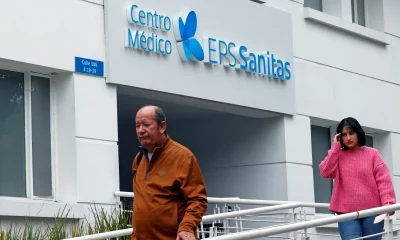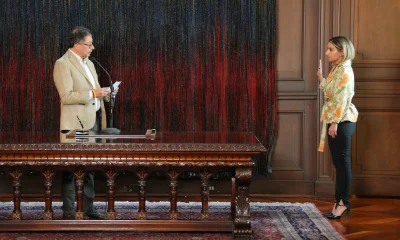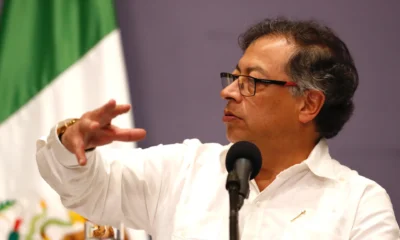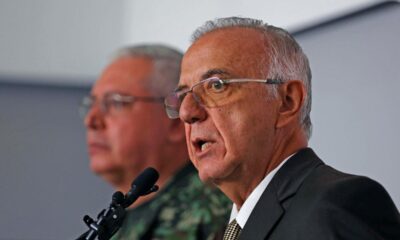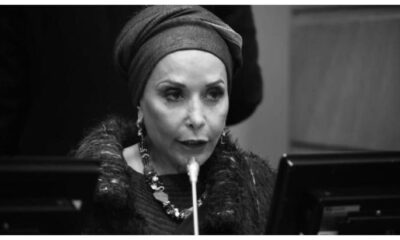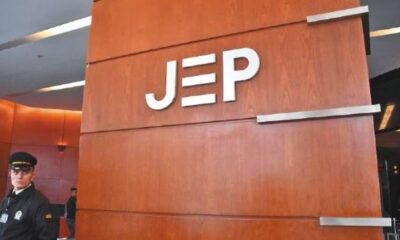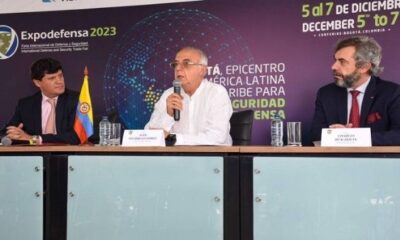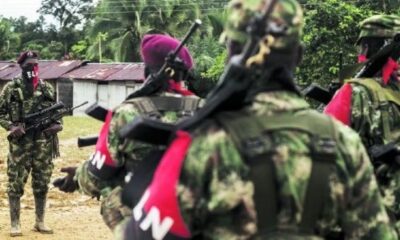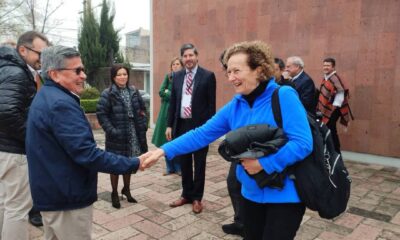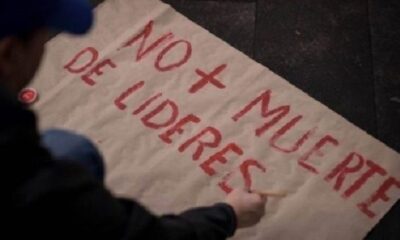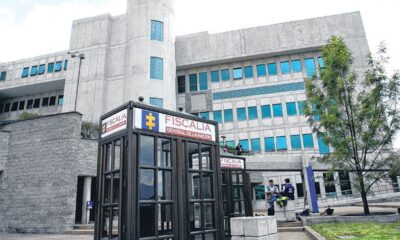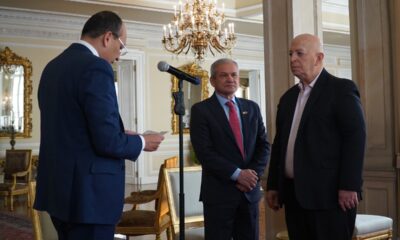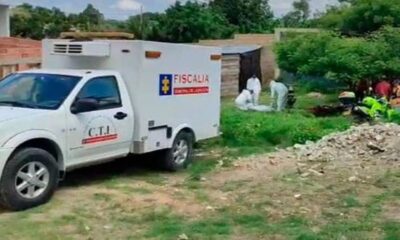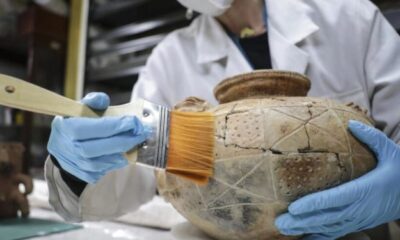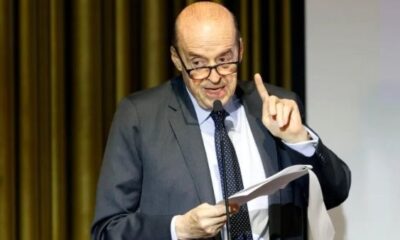International
Asking for permission to enter the house: the demand of Colombian indigenous people against Mennonites
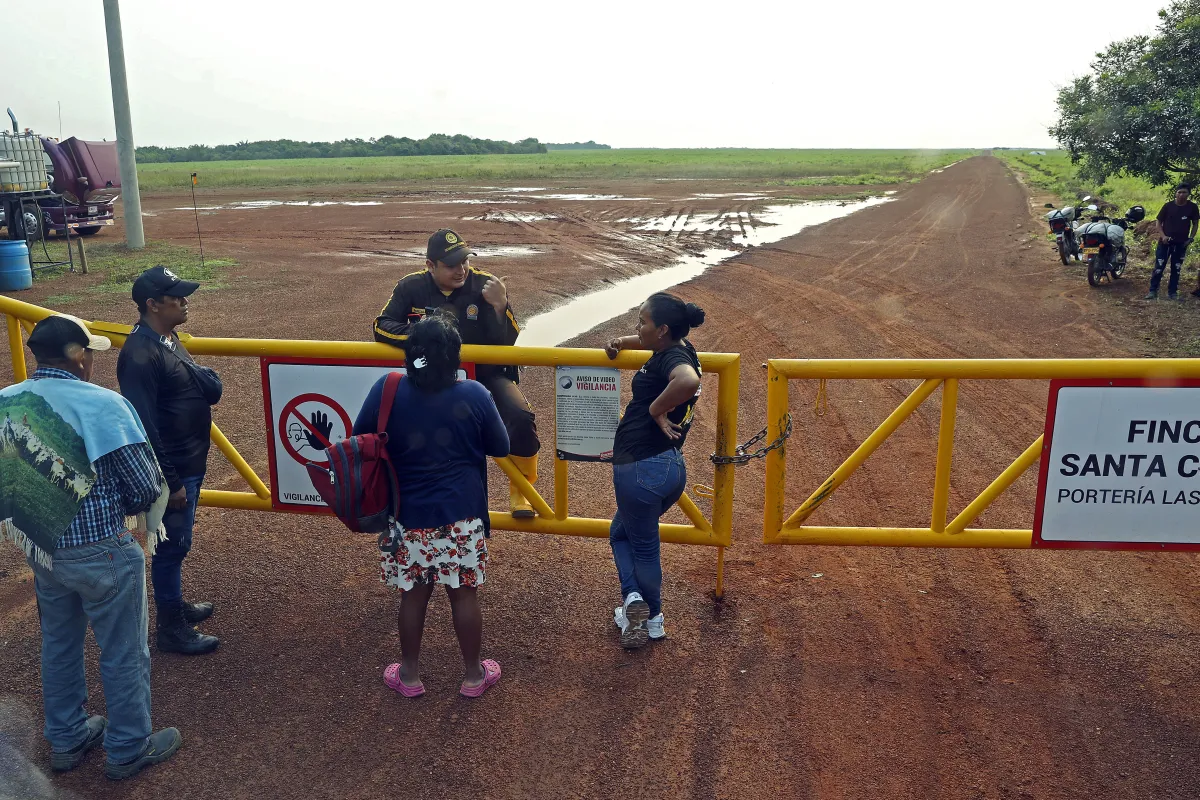
“Yesterday they returned us,” say the Sikuani indigenous authorities in front of the barrier that prevents them from entering their homes, waiting for authorization to continue, and denounce that their ancestral lands, in the Colombian department of Meta, are now owned by third parties who, they say, bought them irregularly.
On the Santa Catalina farm, owned by the meat company La Fazenda, they receive a refusal to pass by the entourage of journalists that accompanies them; they try their luck with the other entrance, that of the Mennonite ultra-religious community, which does authorize them to pass.
“Our grandparents are buried here,” says Jairo Ortiz in front of one of the sacred sites of the Sikuani, now in Mennonite territory.
“In times of violence they left here, they did not sell the land to anyone and left them thrown away, at that time other people who are not indigenous arrived and they took over,” says the captain, a position of authority of this semi-nomadad people displaced in several episodes of Colombian history.
In the Meta they lived until the so-called period of “violence”, which began in 1946, when they had to flee to the neighboring departments of Vichada and Guaviare. Then they returned but came back to persecution with the “guahibiadas” and “jaramilladas”, terms used to refer to the hunts of indigenous people to displace them from their lands and seize them.
A few years ago they returned to the land of their ancestors when the Colombian conflict lowered its intensity, but they realized that theirs was now in the hands of others, including the ultra-religious Mennite community that, coming from Mexico, found the promised land in the Colombian Oriental Plains.
The problem of land in Colombia is one of the great debts of the State; it is very difficult to know whose property each property is because many territories are not entitled.
Now, the 135 Sikuani families of this settlement claim their lands and denounce their appropriation and accumulation by foreigners.
The Mennonites, when they saw the potential of the Meta, hired a lawyer who advised them on the purchase of land, so “in principle” they are legal, explains Diana Quintero, a lawyer of the National Commission of Indigenous Territories, who accompanies the Sikuani in their lawsuit, explains to EFE.
The problem comes when the titles that the Mennonites bought are analyzed, awarded by the state National Land Agency because they were vacant of the nation.
The rule says the wastelands have to remain in the hands of their owner for a certain time, but those who were sold to the religious community did not meet this deadline and the indigenous peoples were not taken into account.
Another alleged irregularity, Quintero continues, is that the allocation of vacant lots has a limit of hectares, something called the Family Agricultural Unit (UAF), and the owners of these lands acquired more than allowed by law, incurring hoarding.
Quintero maintains that the Mennonites hoard because “although they say they are different families, they are part of a nucleus” and link all their lands in the same production process, exceeding the legal limit of UAF.
“Two years ago the Mennonites began to enter little by little. He could not be told anything because they have someone who supports them,” explains Alexander Álvarez, governor of the Iwitsulibo community, which brings together 80 families, in reference to the alleged alliances of the religious community.
According to the indigenous people, in the area there is the presence of paramilitaries of the Gaitanist Self-Defense of Colombia (AUC), allied with the Mennonites to provide them with security. They travel with motorcycles without a license plate and do not identify themselves, while all the Sikuani authorities report having received threats for their demands.
The Sikuani demand a total of 58,000 hectares to be distributed among the four communities and ask for a receipt to be made. Tsabilonia is the community that is closest to getting its claims, since it has been awarded – pending formalization – a territory in extinction of domain that belonged to drug traffickers, but they demand more hectares.
At the entrance of Tsabilonia the difference in the use of the land made by both communities is visible: on the Mennonite side there is not a single tree, only hectares waiting to be cultivated, and on the Sikuani side, pasture and native vegetation.
“They are pressuring us, we are being contaminated by foreign Mennonites who come from Germany, Canada and Mexico,” denounces Albarrubiela Gaitán, the traditional authority of the Barrulia territory: “We want to be calm in our territory, cultivating our uses and customs because as indigenous people we need our motherland to live in peace and freedom.”
The plantings of the Mennonites arrive almost at the door of the house of Albarrubiela; for the moment, the religious community continues to expand the agricultural border while the Sikuani expect the Colombian Justice to issue a decision on a land that went from hope to dispute.
International
Police investigate deaths of Rob Reiner and wife as apparent homicide

The Los Angeles Police Department (LAPD) is investigating the deaths of Hollywood actor and filmmaker Rob Reinerand his wife as an “apparent homicide,” amid a wave of tributes to the director of classics such as When Harry Met Sally.
According to U.S. media reports on Sunday, Rob Reiner and Michele Singer Reiner were found dead at their Los Angeles mansion with what appeared to be stab wounds.
Several political figures shared messages of condolence following the reported deaths of the director of A Few Good Menand his wife.
While the LAPD did not officially confirm the identities of the victims, it stated that homicide detectives were dispatched to the Reiner residence.
“At this time, no additional details are available and the investigation into an apparent homicide is ongoing,” the Los Angeles Police Department said in a statement posted on social media.
LAPD Deputy Chief Alan Hamilton told reporters that no arrests have been made and that no individuals are currently being questioned as suspects.
“I’m not going to confirm whether anyone is being questioned at this moment or not. We are going to try to speak with as many family members as we can,” Hamilton said.
CNN reported that a family spokesperson confirmed the deaths of Reiner and his wife.
California Governor Gavin Newsom, former U.S. President Barack Obama, and former Vice President Kamala Harrisissued statements expressing their condolences.
International
U.S. and Mexico Reach Deal to Address Water Deficit Under 1944 Treaty

The United States and Mexico have reached an agreement to comply with current water obligations affecting U.S. farmers and ranchers and for Mexico to cover its water deficit to Texas under the 1944 Water Treaty, the U.S. Department of Agriculture said in a statement.
The department уточified that the agreement applies to both the current cycle and the water deficit from the previous cycle.
On Monday, U.S. President Donald Trump accused Mexico of failing to comply with the water-sharing treaty between the two countries, which requires the United States to deliver 1.85 billion cubic meters of water from the Colorado River, while Mexico must supply 432 million cubic meters from the Rio Grande.
Mexico is behind on its commitments. According to Washington, the country has accumulated a deficit of more than one billion cubic meters of water over the past five years.
“This violation is severely harming our beautiful crops and our livestock in Texas,” Trump wrote on Monday.
The Department of Agriculture said on Friday that Mexico had agreed to supply 250 million cubic meters of water starting next week and to work toward closing the shortfall.
Agriculture Secretary Brooke Rollins, quoted in the statement, said Mexico delivered more water in a single year than it had over the previous four years combined.
Trump has said that if Mexico continues to fall short of its obligations, the United States reserves the right to impose 5% tariffs on imported Mexican products.
Mexico’s Deputy Foreign Minister for North America, Roberto Velasco, said that a severe drought in 2022 and 2023prevented the country from meeting its commitments.
International
Several people shot in attack on Brown University campus

Several people were shot on Saturday in an attack on the campus of Brown University, in the northeastern United States, local police reported.
“Shelter in place and avoid the area until further notice,” the Providence Police Department urged in a post on X. Brown University is located in Providence, the capital of the state of Rhode Island.
U.S. President Donald Trump said on his social media platform Truth Social that he had been briefed on the situation and that the FBI was on the scene.
At 5:52 p.m. local time (11:52 p.m. GMT), Brown University said the situation was still “ongoing” and instructed students to remain sheltered until further notice.
After initially stating that the suspect had been taken into custody, Trump later posted a second message clarifying that local police had walked back that information. “The suspect has NOT been apprehended,” the U.S. president said.
-

 Central America4 days ago
Central America4 days agoHonduras election crisis deepens as CNE president denounces intimidation attempts
-

 International4 days ago
International4 days agoCuba battles out-of-control dengue and chikungunya epidemic as death toll rises to 44
-

 International4 days ago
International4 days agoColombia says it would not reject Maduro asylum request as regional tensions escalate
-

 International23 hours ago
International23 hours agoPolice investigate deaths of Rob Reiner and wife as apparent homicide
-

 International3 days ago
International3 days agoSeveral people shot in attack on Brown University campus
-

 Central America1 day ago
Central America1 day agoPanama seizes over three tons of drugs hidden in Caribbean port container
-

 Central America23 hours ago
Central America23 hours agoOAS urges swift recount in Honduras as election results remain uncertain
-

 International4 days ago
International4 days agoEcuador on track for record violence as homicides hit highest level in Latin America again
-

 International3 days ago
International3 days agoU.S. and Mexico Reach Deal to Address Water Deficit Under 1944 Treaty



























